Purple or pink flowers? The red or blue jacket? From cars to furniture to iPhones, we make decisions about color all the time. Determining the psychology of colors in marketing is complex; however, scientists are starting to figure out why we like the hues we do.
Color has long been understood to be something which appeals greatly to your visual senses, and it is frequently a tool utilized in marketing. Countless studies of color psychology have found that particular colors have varying effects on consumers, with some colors stimulating areas of the brain in ways which will promote excitement, spontaneity or tranquility.
Marketers have quickly realized that companies are able to have major influence in their target market simply by choosing the right combination of colors.
Research has shown that color preferences are influenced by more than chance. Our experiences with objects determine how we feel about the colors of those objects. To determine the psychology behind colors in marketing, scientists have determined general trends and patterns in color specifically found across cultures. The colors that have a positive response in people relate to their personal preference, cultural upbringing, and the context in which they are seeing the color.
Color Psychology forMen vs. Women

Psychologist Joe Hallock conducted extensive research on the psychology of marketing, particularly on color preferences of men as compared to women in Western societies. Not surprising, research showcases clear preferences in certain colors across genders regarding color shades, tints and hues. The takeaway: both genders love blue and have opposite views on the color purple.
Men prefer bold color while women prefer softer colors. Men prefer colors with black added (shades) and women prefer colors with white added (tints).
A recent study out of the University of California Berkeley has suggested that the psychology of color preference for men and women relates to evolution, suggesting that we like colors that are tied to things that are healthy and promote survival.
A blue sky, for example, indicates calm weather, which might explain why blue tends to be a favored color across cultures. Dark yellows and oranges, on the other hand, invoke urine, feces, vomit and rotting food. As expected, there is usually a dip in preference for these hues in studies around the world. Scientists have also predicted a preference for red among women, who would’ve needed to spot red berries against green foliage in our ancestral hunter-gatherer societies.
Although it’s hard to determine exactly how a certain color will impact each customer of your brand, utilizing research on color psychology allows marketers to gain a better understanding of the probable emotional response your brand will have.
How Color Psychology CanInfluence People




Red
Trying to encourage movement, excitement and passion? Incorporate red into your marketing. Often used by fast-food chains and for clearance sales, red is high in energy and immediately pulls focus. Studies on the psychology of colors in marketing show that red encourages appetites and physically stimulates the human body by raising blood pressure and heart rate.
Blue
If you’re trying to have the opposite effect, go with blue. As the preferred color by men and a favorite among women, blue is associated with both peace and reliability. Providing a sense of security and trust in brands, blue is the preferred color of conservative corporate brands and offices. Science shows that blue curbs appetites and stimulates productivity.
Green
Frequently associated with health, tranquility and nature, green is often used in stores to relax customers. Most commonly found in the promotion of healthy or environmentally conscious products or services, green can also be used to give the perception of a wealthy person or brand. Studies on the psychology of colors in marketing show that green leads to quick decision making due to its ability to stimulate harmony in the brain and encourage balance between body and emotions.
Purple
A favorite among women but hated among men, purple is often associated with royalty, wisdom and respect. Most commonly used in the beauty industry, particularly with anti-aging products, purple represents a creative, wise and imaginative brand. Science shows that purple stimulates the brain and promotes creativity.
Orange & Yellow
Often grouped together in research on the psychology of colors in marketing, orange and yellow both increase cheerfulness, enthusiasm and optimism. Given the right setting, orange and yellow can be used for a multitude of purposes. On one hand, the colors can be used to draw in impulsive buyers and window shoppers and on the other hand, studies on the psychology of colors in marketing show that orange and yellow stimulate the logic center of the brain.
Black, Grey & White
While black, grey and white are often used interchangeably, each evokes a different emotion and stimulates different areas of the brain. Black is often perceived as a symbol of intelligence and is associated with authority, power, stability, and strength. Studies on the psychology of colors in marketing show that grey symbolizes feelings of practicality, timelessness and solidarity in life, but can also draw in emotions of old age and death. White is associated with feelings of purity, cleanliness and safety and can also be used to spark a feeling of creativity as it acts as a clean slate.
Despite the general trends between the sexes on color preference, there are wide-ranging differences among individuals about which colors they like. To dive deeper, scientists have conducted a series of experiments on color psychology and the science of colors in marketing. Researchers showed slide shows of colored objects to a group of participants. The images were biased, so that some people might see nice red things, like yummy strawberries, but unpleasant green images like slime. Others saw unpleasant red things like blood but nice green objects, like trees. Afterwards, the researchers reported in the Proceedings of the National Academy of Sciences, people preferred whichever color had been linked to the positive images they saw, whether red or green.
5 Simple StepsThat Work
The Isolation Effect
It’s no secret that when an item stands out more to a consumer, they are more likely to remember it. Common sense, right? Putting proof to the theory that “less is more,” the psychological principle known as the Isolation Effect states that an item that “stands out like a sore thumb” is more likely to be remembered. Research on the psychology of colors in marketing clearly shows that participants are able to recognize and recall an item far better — be it text or an image — when it blatantly sticks out from its surroundings.
Contrast
Contrast reduces eyestrain and focuses the user’s attention onto a specific item. Research on color psychology shows that use of a highly contrasting accent color garners attention and creates more memorable marketing pieces for consumers. Choosing a stark, complementary color alleviates visual strain and creates an easy to read area. PRO TIP: If you’re trying to highlight a specific section of a website or marketing piece, choose a color scheme where the item is the brightest element of the design. Try a light background with a dark colored item or vice versa for the most user friendly design.
Vibrancy
Vibrancy dictates the type of emotion a design evokes in consumers. Research on color psychology shows that bright colors lead to users feeling more energetic and often elicits more of a response, both positive and negative, out of consumers. Neutral or darker colors are best used if the website or marketing piece has a lot of information because science shows the user becomes more relaxed and has an easier time absorbing the information.
Fitting the Brand
According to published research on color psychology and the Psychology of Colors in Marketing, colors are most effective when consumers believe that the brand’s color “fits” the brand. If you sell to organic foodies, it makes more sense to use green or brown than macaroni and cheese orange. Sometimes brown is used for something natural, perfect for those organic foodies. Other times it’s rugged and masculine, perfect for hunters and motocross athletes. The world’s most successful brands utilize colors that are appropriate for the type of message they are trying to portray and the emotion they are hoping to evoke.
Choosing a Color Scheme
Research on the psychology of colors in marketing shows that various color schemes elicit different emotions. Using 1, 2 or 3 colors in a marketing piece or website can produce vastly different responses. Monochromatic color schemes consist of using a singular color in various shades and hues. This tends to be easier on the eye and works great in web based marketing applications. If you’re looking for a minimalistic or simple look, the monochromatic color scheme produces the best results.
Print marketing materials often use a two color system of complementary colors. Research shows that the most appeasing complementary colors are on opposite sides of the color wheel (red/green, yellow/purple, orange/blue).
Web designers and modern brands most commonly employ the triple color scheme creating a bolder and more modern aesthetic. When using three colors, research shows that to create the most harmonious effect, the three colors should be equally spaced on the color wheel (blue/red/yellow, orange/purple/green)




Successful Use of Colors inBig Brands
McDonalds:
The signature red and yellow logo of McDonalds is most appealing to children. Red is used to increase appetite and to increase of sense of urgency, getting customers inside to order faster. On the other hand, yellow is the color of cheeriness and optimism, creating an atmosphere of positivity about the brand. When put together, science shows that red and yellow together can be agitating to consumers.
Starbucks:
Uniquely to Starbucks, studies on color psychology point out that the green logo creates a relaxing environment for its customers and promotes a stress-free rest or work zone. The use of the mermaid logo also stimulates the customers associations with nature.
Veuve Clicqot:
Yellow provides standout for premium champagne brand Veuve Clicquot – cutting through a sea of green, gold and cream with a punchy shot of bright yellow. Exuding luxury with each component of this 300 year old brand, every bottle is still adorned with the signature of it’s founder and a portrait of her can be found on the metal cork cap. The anchor, which was used to identify the champagne from others before bottle labels were standard, is also an original identifying mark of the Veuve Clicqot bottle.

